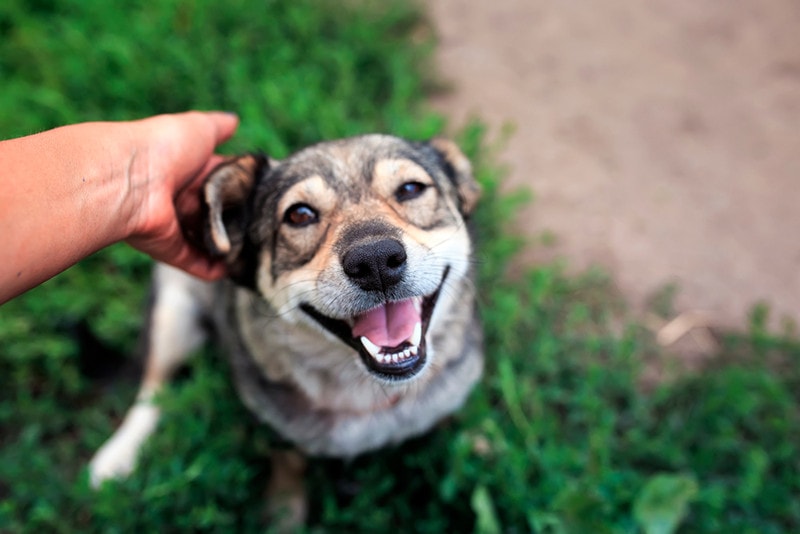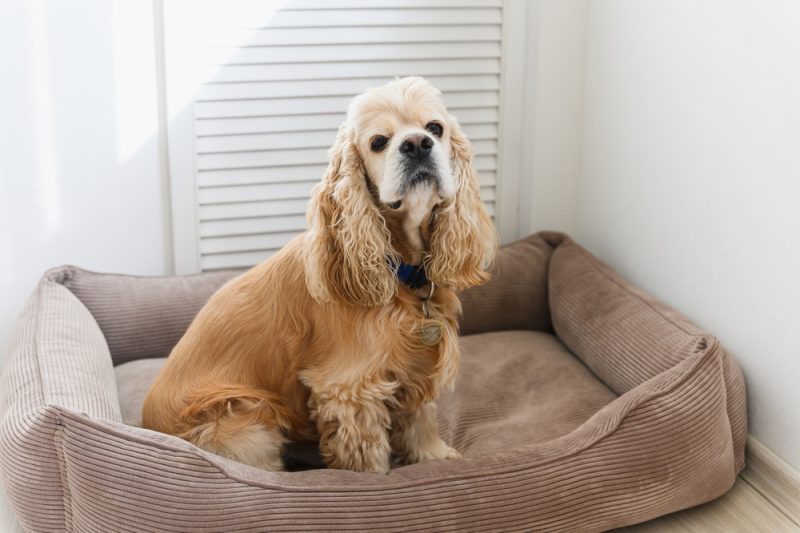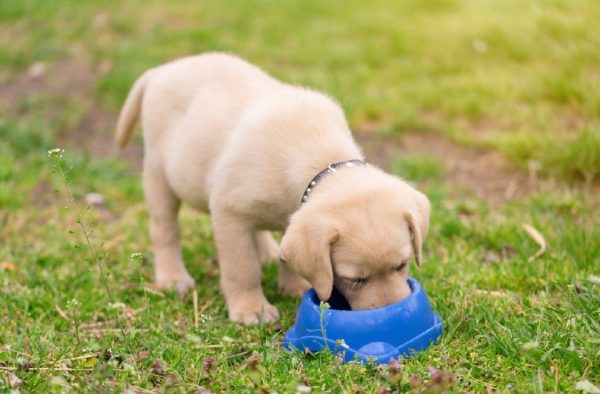It’s a classic first response to see a dog and immediately want to pet them. The pups seem to evoke reactions in us that make our cuteness meter go off the charts.
However, how we interact with our canine companions differs from how they interact with one another. Sometimes, our boisterous physical touch and other mannerisms can confuse dogs. In this article, we’ll explain why you shouldn’t pat an unfamiliar dog on the head.

Patting a Dog on the Head
You may have heard you shouldn’t pet a strange dog, but have you ever wondered why? If you have a doggy that soaks up every bit of physical affection they can get, you might think this is an outright lie. After all, most dogs love being petted.
However, not every canine will react in the same way. We’ll explain why there might be better ways to interact with dogs.

A Head Pat Is Threatening, Studies Find
Sometimes, our dogs show affection by bringing us their favorite toy or licking our faces. Then, they get confused if we refute their gift or love language. Similarly, we do things that may seem like loving behavior, but our dogs don’t perceive it that way.
Studies have shown that patting a dog on the head can cause unwarranted fear. According to animal expert Sarah Barlett, going over a dog’s head (especially a strange dog) can be intimidating and threatening.
How to Approach a Dog Appropriately
So, you shouldn’t pat a dog on the head—now what? Instead, Sarah recommends this method.
- Approach the dog from the side, crouching down to meet them where they are.
- Do not move, allowing the dog to approach you if they want to.
- Extend your hand, allowing the dog to sniff and familiarize themselves.
Where Should You Pet a Dog Instead?
Instead of approaching a dog and patting their head, focus on the back area, shoulders, and sides. It also helps to get down to the dog’s level as they approach you instead of towering over them.
Importance of Understanding Canine-Human Behaviors
Since we communicate differently, bridging the gap between us can be challenging. We count on comprehending the body language of our canine companions to ensure we give them proper love and care.
Doing something that makes our pups uncomfortable can dampen the relationship or confuse them at best. Interactions can go much smoother if you just get on a dog’s level. After establishing a relationship, learning to read body language makes things a lot easier.

Does Every Dog Hate Head Pats?
As with anything else, every dog is an individual. One dog might find head pats upsetting, while another will demand it. Reading the room can help a lot. If you have a dog, you can probably tell if they enjoy head pats.
However, when meeting new canines or interacting with other dogs, keeping your hands off their heads is best. Instead, allow the dog to smell you, lick you—whatever they want. Then, aim for the side or down the back rather than going right to the top of the head.

Conclusion
When you first meet a canine, you want the interaction to go well. Most friendly dogs will want to inspect you, and you can get on their level and let them sniff around. If they seem like they want physical affection, remember to avoid the mouth, snout, and head, focusing more on the back and sides of the body.
After you establish trust with a dog, they might enjoy massages on the head, but this can vary from dog to dog. Anytime you approach a new canine, it’s best to use caution until they show you how they prefer to interact with you.
Featured Image Credit: Bachkova Natalia, Shutterstock


















